
DTEN D7 75”
Top of my wishlist for small/medium collaboration rooms is the DTEN D7 75. Basically a self-contained Zoom Rooms alternative that removes the need for a PC, credenza, and miscellaneous items in the room. Little bit spendy, though.

DTEN D7 75”
Top of my wishlist for small/medium collaboration rooms is the DTEN D7 75. Basically a self-contained Zoom Rooms alternative that removes the need for a PC, credenza, and miscellaneous items in the room. Little bit spendy, though.
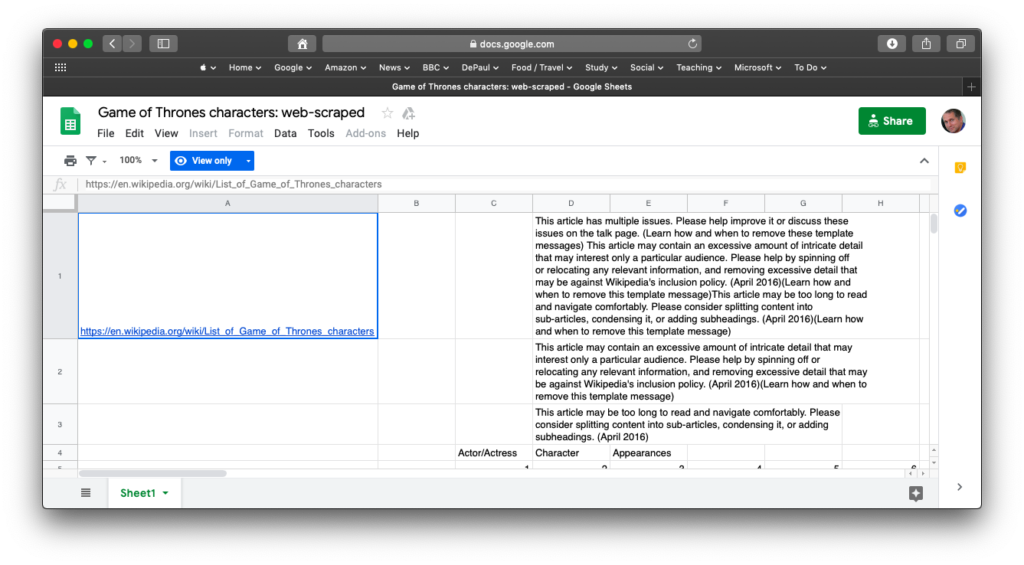
John R. Gallagher (Assistant Professor of English at University of Illinois, Urbana-Champaign) provided an extremely useful workshop on web scraping at DePaul today.
The workshop was introductory, and used the XPath query language and Google Sheets to begin, and then mapped out how R and Python could be used to automate.
Planning to come back to his resources and dig in deeper.
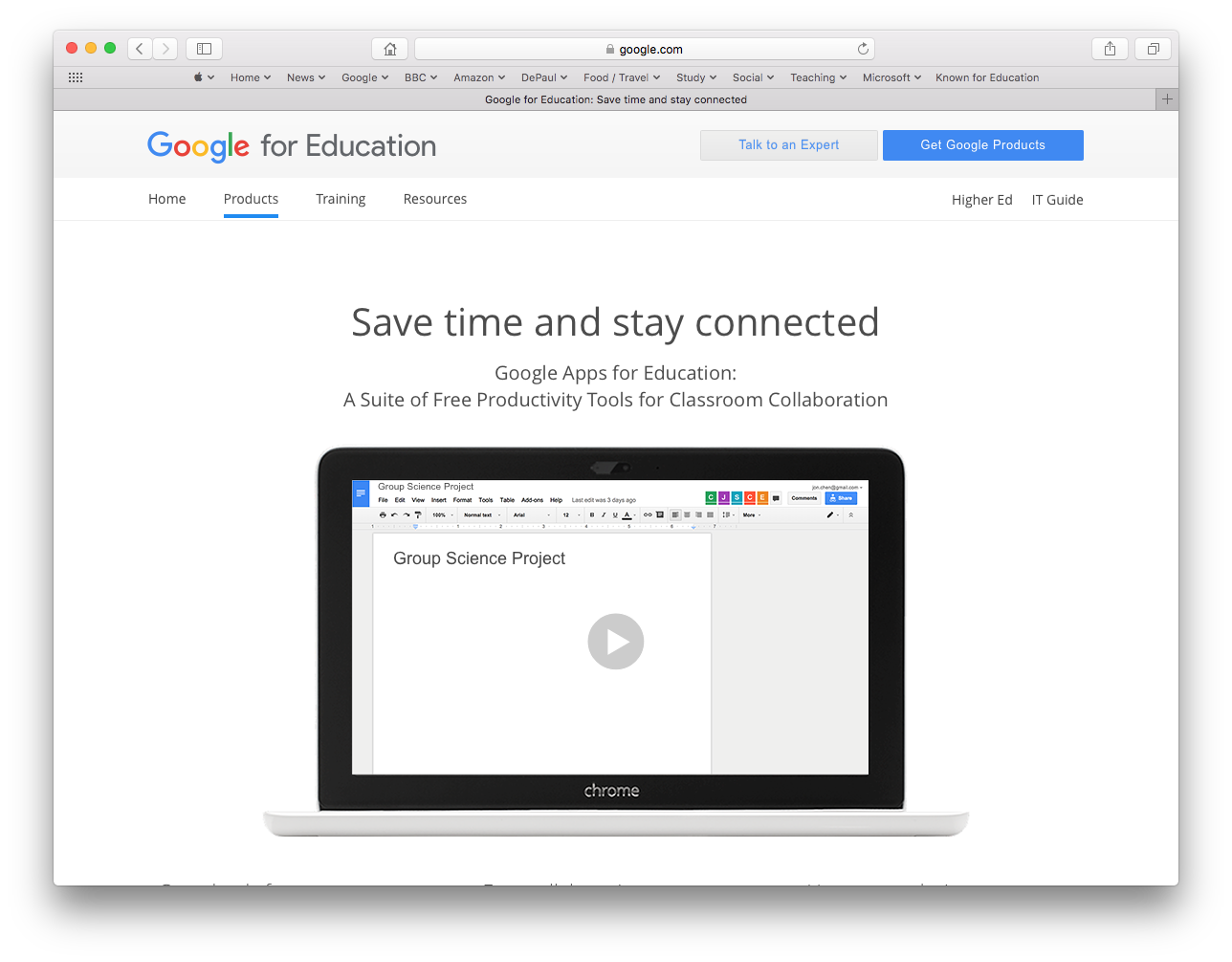
Over the weekend I received a request from a colleague that our university adopt Google Apps for Education. There are significant arguments either side of the adoption debate, and I am starting (again) to aggregate some sources of information and data.
Song Gao (Ph.D. student at Auburn University) has created a rather useful Google Apps customers list on GitHub. The ability to search and filter is helpful (but some entries in the list to not have an associated city or state).
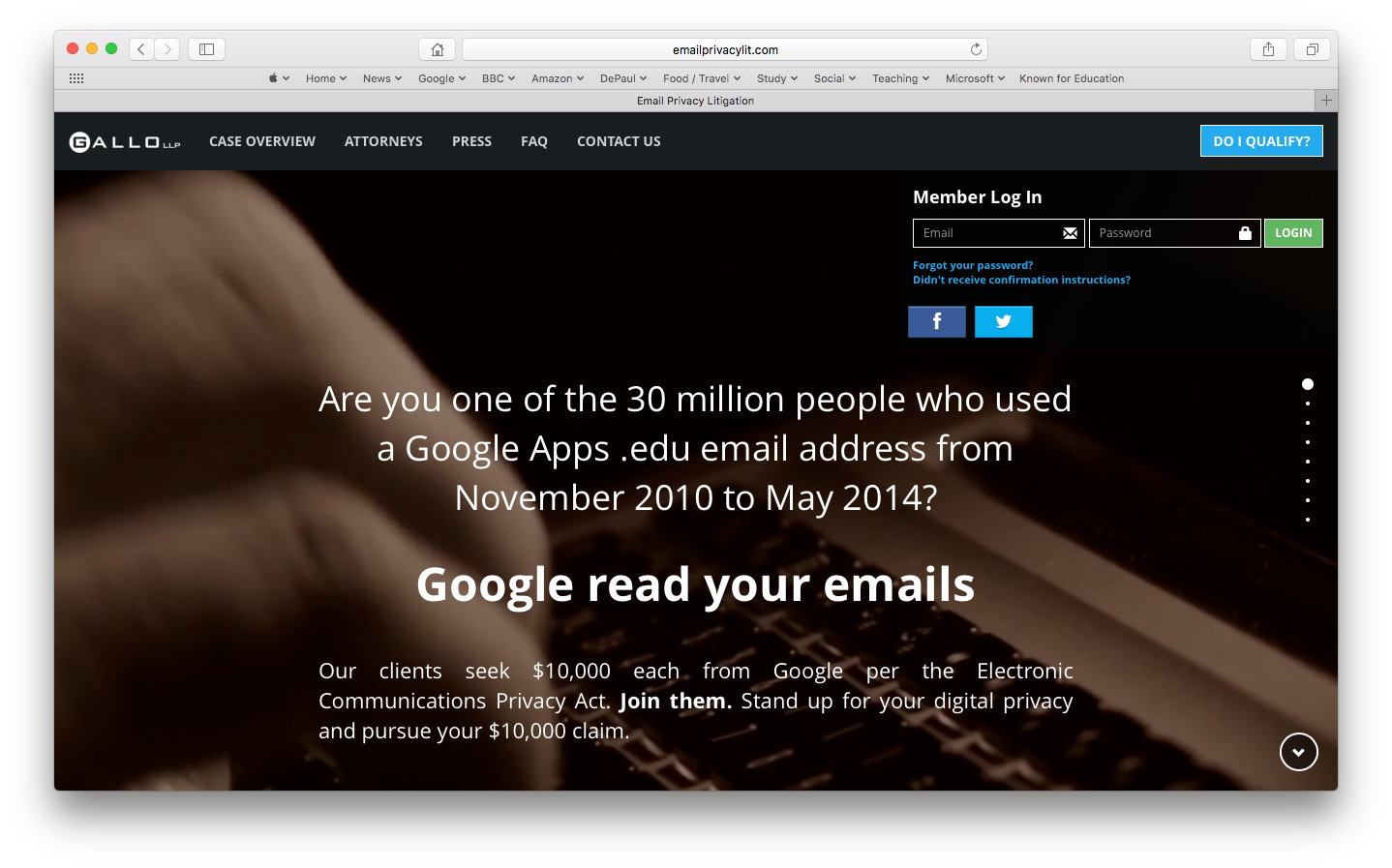
Foremost on my mind is the current legal action where university students are suing Google because the company allegedly scanned their email without consent. According to Google, “Google Apps for Education services don’t collect or use student data for advertising purposes or to create ads profiles” (although my understanding is that this is a configuration setting). The EFF thinks differently, and in 2015 launched their “Spying on Students” project.
I have not looked to closely into the cost of moving to Google Apps for Education, but the University of Michigan does say this about their decision:
Except for some limited specialty features–such as enhanced security and archiving–Google Apps for Education is provided at no charge to U-M. The business case cost analysis and financial projections estimate that for an initial investment of $1.8 million the university will realize ongoing cost savings of approximately $750,000 annually. Savings are achieved through the elimination of non-productive, redundant services, some decrease in infrastructure expenditures, and by leveraging the delivery options of Google’s cloud computing services.
Ultimately Google marches on, with Chromebooks now outselling Macs for the first time in the U.S.

For several years now, I have recorded every class that I have taught and the majority of the presentations I have given. I had a process that worked for me, efficient and low cost. I shared my process with others.
However, upgrading to OS X El Capitan placed a little bump in the road. My typical process was as follows:
After upgrading, the Ecamm BT-1 Bluetooth webcam would not work at all. This handy little device is no longer supported by Ecamm, so my options were to give it up or roll back the OS to Yosemite. I decided to give up on the Bluetooth webcam, which was a shame. Having a wireless webcam that recorded live greatly speeded up editing – there was no need to import media or struggle with synchronizing content. I have been on the search for a comparable wireless webcam, but there does not see to be anything on the market, and my attempts to MacGyver an alternative all failed.
Adding insult to injury, the Zoom H2 microphone input that I connected to ScreenFlow sounded truly awful after the El Capitan upgrade (with strange audio artifacts and reverb). Again, working with older equipment, so unsure if there was a patch that would help. Newer gear, or just using the onboard microphone on the MacBook Air would be the easiest option.
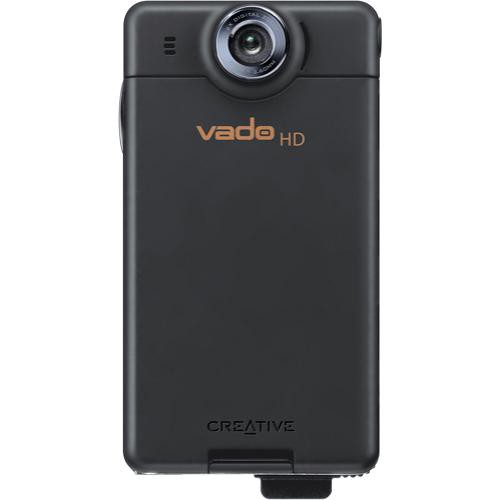
So I dug out the camera that I previously used to record in the classroom – the Creative Vado HD Pocket Video Cam. A great little device that used to work well for me. The cam could easily record a three-hour class (changing the battery at breaks), and had a decent microphone to pick up room audio (if my dedicated audio recording failed). Unfortunately the Vado records AVI files in an old and unsupported codec. Previously, Perian could be used to play the imported media files in ScreenFlow. However, Perian is no longer an option. Strangely enough, MPEG Streamclip could not convert the AVI recordings into something that Screenflow could use, but Epiphany’s Tube did the job. However, this just added additional delay (import media, convert media, import to Screenflow) to what had been an efficient process. The Vado HD went back into the drawer of discarded technology, and I looked for something cheap and cheerful.
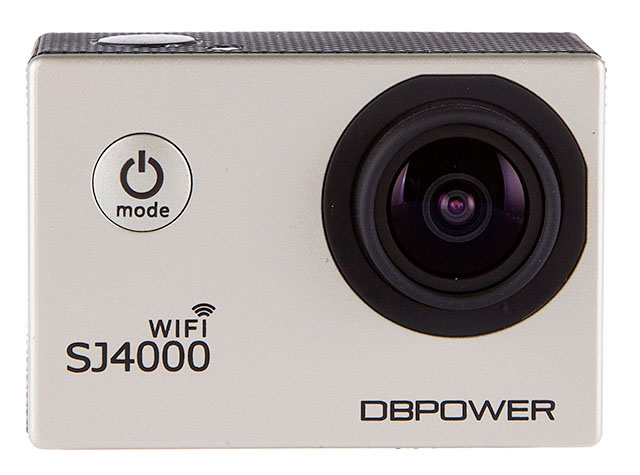
The SJ4000 Wifi was selling insanely cheaply on Amazon, so I decided to give this a go. At the moment I am unsure if this is a genuine SJ4000, as the branding says “DBPOWER,” but this is an extremely affordable GoPro alternative.
The camera comes with a plethora of cases, stands, cables, and accessories. Best of all was a semi-open case that had a tripod screw top and bottom. Through the use of a male threaded screw adapter, I was able to place my Vado HD and SJ4000 cameras on the same Gorrilapod. This way I could record with multiple cameras, using a tested option as a reliable backup.

First Failure – Too many snippets
My first test was a dismal failure, with the SJ4000 recording a sequence of very short clips. Changing a few settings on the menu fixed that. However, I did see that recordings were stopping about the 45-minute mark. To try and fix this, I bumped the resolution down to 720P (1280x 720 60fps) from 1080FHD (1920 x 1080). In a very basic test (recording myself typing at my desk) this seemed to improve things – the recording would automatically split into two clips at the 01:06:50 mark. Generally I try and keep my classroom sessions no longer than an hour, so this should be OK. Recording at this stage is about 4GB in size, and works most reliably when copied over from the SJ4000 to my local drive.

At the moment the new process works, but is not as efficient as working with the BT-1. I am contemplating seeing if the Mevo will be a solution for me.

And maybe I could take a look at the Zoom H6 Six-Track Portable Recorder.

The FutureLearn MOOC “Why We Post: the Anthropology of Social Media” has officially finished (although the course stays open). The creators of the course have shared a podcast in which they answer some of the student questions from the final weeks. This is a nice way to close the course (although I think I would have preferred a video – as this would have followed that way the previous content was shared).
The end-of-course email was a good touch. Not all MOOCs I have looked at do this. The email is an efficient way of reminding students of the various resources that they have encountered, as well as alerting students other educational options (upselling). With Why We Post, this was a link to the MSc in Digital Anthropology.
I have just successfully completed two FutureLearn (full disclosure: a friend of mine works for the company, but beyond sharing some of my experience with him this has not affected my studies) courses: “Why We Post” and “Blended Learning Essentials: Getting Started.”
Listening to the Click podcast (What is the Point of Posting on Social Media?) was where I first heard about the MOOC on Social Media, and was soon hooked into enrolling.
The experience gave a chance to do a coupe of things:
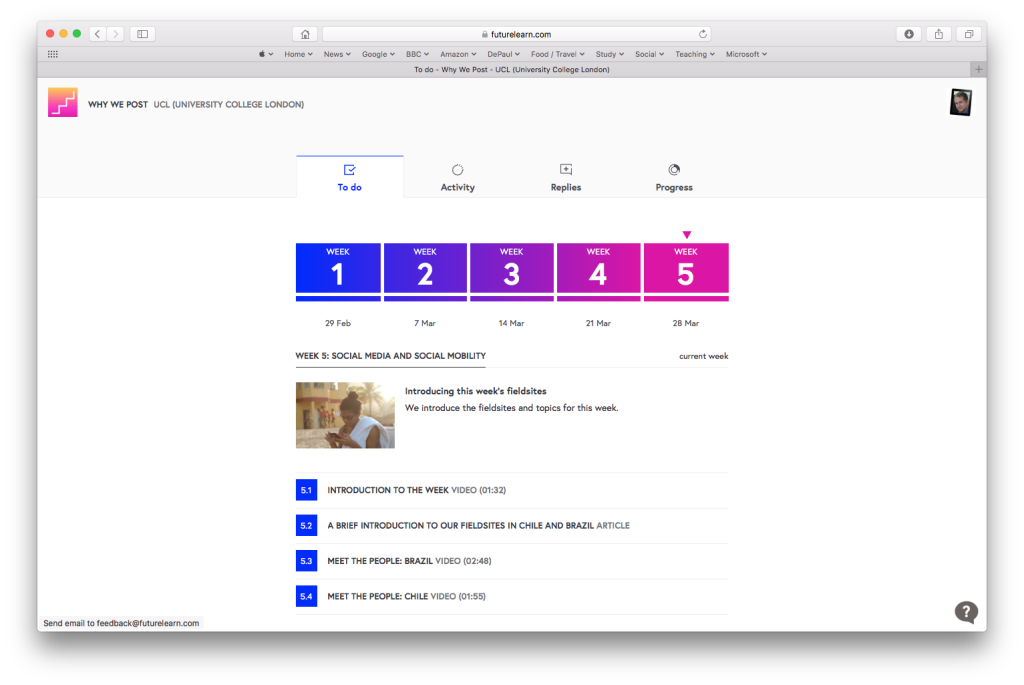
The “Why We Post” course was not what I thought it would be. Even though I knew what some of the focus was based upon listening to the interviews on the Click podcast, I still expected to see coverage of social networking platforms and techniques. The course was more the sharing of anthropological research from a series of field sites around the world.
However, it was a fun course and I particularly enjoyed the discussion board conversations with several participants. Each day I would eagerly check to see if there were any replies to a conversation in which we were exploring ways in which the research could be improved.
The course also shared some particularly helpful open resources:
The FutureLearn platform is very much designed for the Cloud. The central concept is that the courses, content, discussion, and student progress will stay there forever in an open and accessible format. I am a cynical individual, so my progress through the course was largely to copy content down to a working journal. Here I could record my progress and compose my responses before copying and pasting back to the discussion boards. For that reason, the course worked best for me where I could use a large monitor in a nice quiet office.
However, the platform would work very well for those on a mobile device (i.e. iPhone or iPad) with no need to save content locally. All elements of the course worked well on the mobile devices I tested on – far better than my experience with Blackboard or Desire2Learn.
Initially I was less impressed with the discussion board. The options to post and reply are very limited (no formatting of text or adding multimedia). Nested replies were not possible. However, I assume this is a tradeoff in terms of ease-of-use, security, and speed (storage). This did not prove to be an issue.
By testing on both courses I was able to experience quizzes, peer assessment, and video. FutureLearn provides both subtitles and transcription for the videos. The videos can be streamed or downloaded.
The profile options were simple, but easy to use.

The business model seems to be partially underwritten by “Statements of Participation.” These can be purchased after successfully completing a set percentage of the course. The certificates are reasonably priced, and can be embedded in LinkedIn. I was very happy to pay what I did for the experience. I have no idea how highly the statements are viewed by employers or higher education.
The material here was more familiar to me, and I was interested to see how the two educators designed and delivered this course. One technique in particular impressed me…
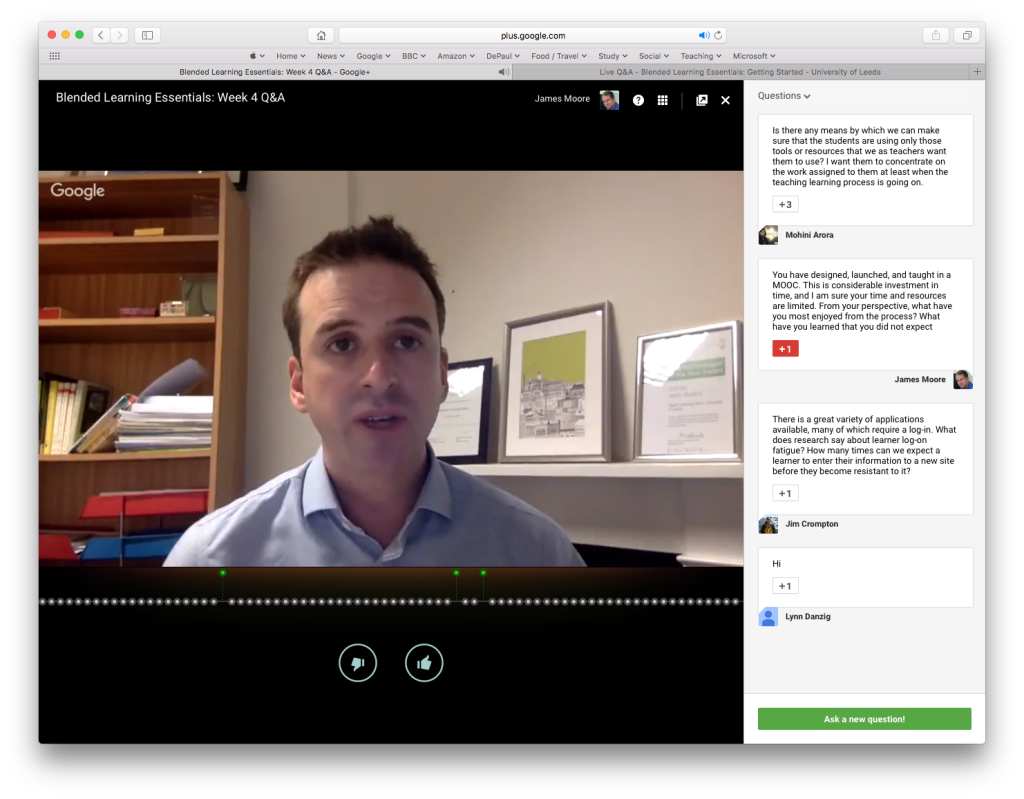
Google Hangouts
Creating presence in an online course can be difficult – after a while students drop out due to inertia and competing demands on their time. With presence (the addictive need to check into a course and see what is happening), you are more likely to see those students complete the course.
Diana Laurillard and Neil Morris did a great job of crafting easily digestible content and activities that were just the right size. Additionally, they used Google Hangouts and Twitter to make themselves approachable and relevant as the course was taught. Answering questions live in front of a webcam is a scary experience, but became one of the high points of the course (one good technique that Neil followed was to blend live questions from Hangouts with printed questions and Tweets). I am very tempted to try the same thing later in the year.
Two quotes during the course resonated with me:
Anyway, looking forward to the second Blended Learning course in June.
This is a particularly interesting case of dumb design. The Touch of Modern website forces the prospect to login or to create an account to simply view the site and the available items to purchase. I have no idea how the site owners were able to justify this their web designer, but this is a classic example of stupidity. I cannot imagine how many potential customers are irked by this and decide to take their business elsewhere.
I was at The Annual Conference on Distance Teaching and Learning last week. The conference seems to get better each year, and I needed the weekend to think a little deeper about what I saw and heard. This here, is both a prompt and a reminder (so that I don’t forget what I saw, and work on the projects that I want to).
As usual, several of the participants used Twitter for back-channel conversations. This became a useful tool to aggregate comments and resources via the #UWdtl hashtag. Hopefully more participants get onboard next year.
I managed to catch a couple of Speed Sessions Tuesday afternoon, only the last four, but these were helpful. The “speed” part of the speed sessions was hurt a little when presenters had difficulty getting their laptops to work with the HDMI connection to the projector in the room, but luckily those with recalcitrant laptops were able to borrow working MacBooks. Of the four sessions that I saw, Moses Wolfenstein‘s “Finding a Place for Gamification in Learning” was the most entertaining, but Laura Bunte of Stratagem had some very useful formulae and templates to share for projecting the cost of developing online content.
I was lucky enough to see a series of information sessions that met my interests and needs:
I am going to be at the 31st Annual Conference on Distance Teaching & Learning (11th – 13th August, 2015) this year. DEPD Director Les Howles has some great tips for presenters, highlighting do’s and don’ts. This is based upon feedback from conference attendees, and is well worth watching and reading.
The handout has 10 things that a successful presenter should do, and 10 things a successful presenter should not do. Ultimately, your presentation should should provide lots of practical tips and advice. You also want to share “plenty of relevant real-world examples and lessons learned”
Les also shares my bugbear. I hate it when I encounter “session descriptions that don’t match the content presented.”
If you have not done so already, you can register for the conference here:
https://dtlconference.wisc.edu/
(Full disclosure: I am on the 2013-2015 Planning Committee for the conference)
I was in China recently, and towards the end of the trip a Chinese a teacher shared these example of Chinese MOOCs with me. I cannot speak for the quality of the courses, but here they are: